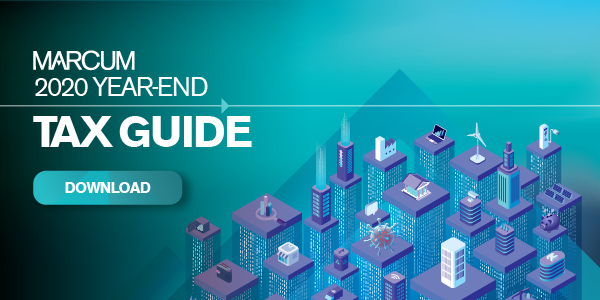Research and Development (R&D) Tax Credit: Applicability and Benefits
Thousands of companies from diverse industries benefit from the research and development (R&D) tax credit. The credit, which has been in existence since 1981, provides more than $10 billion of tax savings to U.S. businesses annually.
The R&D tax credit, which is a dollar-for-dollar benefit, provides significant cash flow to taxpayers with qualifying expenses. This important benefit was made permanent by the 2015 Protecting Americans from Tax Hikes (PATH) Act. Recent changes to the PATH Act, as well as the Tax Cuts and Jobs Act (TCJA) have made the R&D tax credit even more lucrative.
Calculating the R&D Tax Credit
The R&D tax credit is calculated by determining the amount of Qualified Research Expenditures (QREs) for a company’s current and prior tax years. QREs include wages, consumable supplies used in the R&D development, and 65% of third party contractor researchers’ expenses.
In order to meet the definition of qualifying research expenditures, research activities are required to be performed in the United States and to satisfy a “four-part test”:
- The work is performed to develop a new or improved business component (product, process, technique, formula, invention, or computer software component).
- The activities are performed to discover information that is technological in nature. The activities involve physical, biological, engineering, or computer sciences.
- The research is performed to eliminate technical uncertainty, determine if a desired result can be achieved, determine how to achieve it, or determine the specific design of a product.
- The activities include a process of experimentation involving identification of the technical uncertainties, alternatives to consider in eliminating the uncertainties, and a process for evaluating alternatives.
The R&D tax credit is not only available at the federal level, but 36 states also offer similar programs to incentivize business growth in such industries as:
- Manufacturing & Distribution
- Construction
- Technology & Life Science
- Food & Beverage
- Alternative Investment Group
- Healthcare
- Cannabis
Payroll Tax Relief
The PATH Act not only made the R&D tax credit permanent, it enacted a key incentive which allows qualified small businesses to offset the 6.2% employer’s Social Security portion of payroll taxes. The payroll relief is not limited to R&D employees, but rather, can be used to offset the employer’s share for all employees. A qualified small business is generally defined as a business operating for less than five years and has less than $5 million of annual gross receipts.
The R&D payroll tax credit can offset up to $250,000 of payroll taxes per year for up to five years. The credit may also be claimed if the business uses a certified Professional Employer Organization (PEO). This provision gives more qualified small businesses the ability to utilize the R&D tax credit, where the lack of taxable income might have prevented them from using this benefit previously.
As indicated by its name, the R&D credit offsets a company’s taxes. Since many small, start-up businesses operate at a loss in their early years and are cash strapped, the payroll offset related to the R&D tax credit now provides some relief to this scenario.
Alternative Minimum Tax (AMT) Relief
The PATH Act also provided businesses the ability to utilize the R&D credit to offset the Alternative Minimum Tax (AMT) for taxpayers with $50 million or less in average annual gross receipts over the three preceding tax years. (Subsequently, the TCJA eliminated corporate AMT, but this benefit still exists for non-corporate taxpayers.)
Summary of Recent Tax Acts and R&D Credit Opportunities
The PATH Act made the R&D tax credit permanent, providing significant tax relief and clarity for companies utilizing this lucrative tax credit moving forward. Although the Coronavirus Aid, Relief, and Economic Security (CARES) Act of 2020 did not directly impact or change the qualification requirements, the TCJA further enhanced the benefits provided by the PATH Act. The TCJA effectively increased all R&D benefits by expanding the availability. For corporate taxpayers, as noted above, the TCJA eliminated the AMT, thus removing a hurdle that had previously prevented some corporate taxpayers from utilizing credits.
R&D Expense Planning
For tax years beginning prior to January 1, 2022, the current R&D accounting methods remain unchanged. However, for tax years beginning after that date, the TCJA eliminates the availability to deduct R&D expenditures currently. Proposed tax treatment will require taxpayers to capitalize and amortize R&D expenses over five tax years.
The TCJA also changed the formal language detailing the R&D tax credit from “research or experimental expenditures” to “specified research or experimental expenditures.” It also added a special rule requiring that any amount paid or incurred in connection with the development of software is to be treated as a “specified research or experimental expenditure,” which may restrict a company’s ability to deduct software development expenditures post-December 31, 2021.
Recommendation
The PATH ACT and TCJA significantly increased the R&D tax credit’s value and opportunity to evaluate potential credits as a part of taxpayer’s year-end tax planning. Using this credit can help a company’s cash flow by reducing income and/or payroll taxes due. In addition, businesses may be eligible to claim the credit for prior years and take advantage of the opportunity to amend previous returns.





















